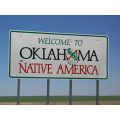Public colleges and universities are government-supported institutions that offer education at a subsidized rate. Although students can attend a public school at much lower cost than a private school, public institutions still offer top-notch education. Nevada is home to several notable public schools with nursing programs, including College of Southern Nevada, University of Nevada, and Nevada State College.
Overview of public nursing programs
Latest articles
Nurses are the frontline providers of Nevada’s healthcare services. They are essential in the delivery of day-to-day patient care in a variety of settings that reach beyond hospitals and clinics. For example, many nurses work in long-term care facilities, nursing homes, health maintenance organizations, and outpatient surgicenters. The need for nurses in virtually every healthcare setting has made nursing the largest healthcare profession in the U.S.
Overview of nursing roles
Albuquerque offers a variety of notable programs for students wishing to pursue a career in nursing. We’ve profiled the options below for each of the major nursing roles. Use it as a guide to find a program that matches your career goals.
Nursing assistant
A master of science in nursing (MSN) program is an attractive option for registered nurses (RNs) wishing to move into management, advanced practice, or public health nursing. MSN programs provide students with the tools needed to practice and compete in the ever-changing healthcare landscape.
Overview of MSN programs
The bachelor of science in nursing (BSN) is one of the most desired nursing degrees. It is also one of the most competitive and demanding programs for aspiring nurses. Fortunately, successful completion of a BSN program often leads to better job and career advancement opportunities. Before taking the plunge, it is important to understand what a typical BSN program entails.
BSN programs
An associate's degree in nursing (ADN) is one of the most sought-after degrees in New Mexico’s healthcare industry. It only takes two years to complete, providing valuable nursing training and practice at an affordable cost.
Associate's degree in nursing programs
A master of science in nursing (MSN) is a graduate degree that enables nurses to further their careers in advanced fields like nursing administration, nursing education, and family practice nursing. The MSN degree is a prerequisite for registered nurses (RNs) to assume specialized roles with higher earning potential, like nurse practitioner and nurse anesthetist. For example, Oklahoma’s RNs earn a median annual salary of $57,000. By comparison, the state’s nurse practitioners earn $81,000 per year, and its nurse anesthetists receive $165,000 in annual compensation.
Oklahoma’s nursing schools are experiencing increased demand for their bachelor of science in nursing (BSN) programs. This is driven by employer preference: the state’s healthcare providers increasingly favor BSN-educated nurses in their hiring and promotion decisions. While Oklahoma’s registered nurses (RNs) earn an attractive median salary of $56,870, those with BSN degrees frequently earn top-quartile pay of $67,460 or more.
In Oklahoma, most associate’s degree in nursing (ADN) programs focus on licensure for aspiring registered nurses (RNs). However, a handful of associate’s degree programs offered by Platt College prepare candidates to work as licensed practical nurses (LPNs). In either case, the associate’s degree requires just two years of fulltime study, much briefer than traditional four-year degree programs. Oklahoma’s registered nurses can look forward to an attractive median income of almost $57,000 upon graduation. We highlight below a few of the top ADN programs in the state.
A licensed practical nurse (LPN) holds many responsibilities in assisting sick, injured, and elderly patients. LPNs usually work under the supervision of a registered nurse (RN). The LPN role is especially attractive to students who wish to enter the workforce quickly, since most candidates pursue a brief 12- to 18-month certificate. The lengthier option to pursue a two-year associate’s degree is also available in Oklahoma. The state’s LPNs earn a median annual salary of $36,900. We profile below several of the top LPN programs in Oklahoma.










